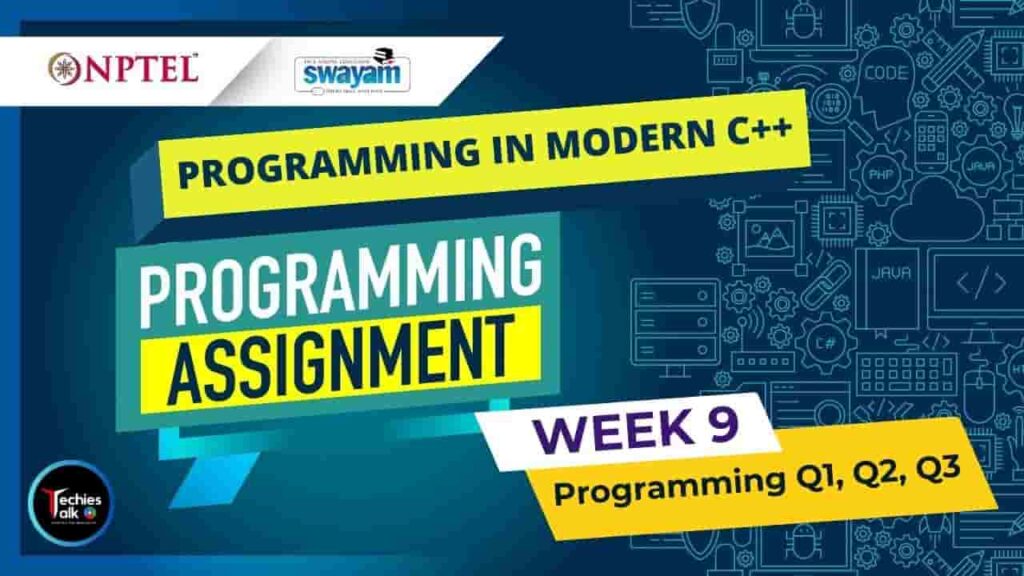
There has been a continual debate on which programming language/s to learn, to use. As the latest TIOBE Programming Community Index for August 2021 indicates – C (13%), Python (12%), C++ (7%), Java (10%), and C#(5%) together control nearly half the programming activities worldwide. Further, C Programming Language Family (C, C++, C#, Objective C etc.) dominate more than 25% of activities. Hence, learning C++ is important as one learns about the entire family, about Object-Oriented Programming and gets a solid foundation to also migrate to Java and Python as needed. C++ is the mother of most general purpose of languages. It is multi-paradigm encompassing procedural, object-oriented, generic, and even functional programming. C++ has primarily been the systems language till C++03 which punches efficiency of the code with the efficacy of OOP. Then, why should I learn it if my primary focus is on applications? This is where the recent updates of C++, namely, C++11 and several later offer excellent depths and flexibility for C++ that no language can match. These extensions attempt to alleviate some of the long-standing shortcomings for C++ including porous resource management, error-prone pointer handling, expression semantics, and better readability. The present course builds up on the knowledge of C programming and basic data structure (array, list, stack, queue etc.) to create a strong familiarity with C++98 / C++03. Besides the constructs, syntax and semantics of C++ (over C), we also focus on various idioms of C++ and attempt to go to depth with every C++ feature justifying and illustrating them with several examples and assignment problems. On the way, we illustrate various OOP concepts. The course also covers important advances in C++ 11 and later released features..
Programming In Modern C++ Week9 Programming Assignment July 2023
INTENDED AUDIENCE : Any interested audience
PREREQUISITES : 10th standard/high school
INDUSTRY SUPPORT : Programming in C++ is so fundamental that all companies dealing with systems as well as application development (including web, IoT, embedded systems) have a need for the same. These include – Microsoft, Samsung, Xerox, Yahoo, Oracle, Google, IBM, TCS, Infosys, Amazon, Flipkart, etc. This course would help industry developers to be up-to-date with the advances in C++ so that they can remain at the state-of-the-art.
Course Layout
Course Name : Programming In Modern C++ July 2023
Programming Assignment : Q1
#include<iostream>
template<typename Itr, typename T> //LINE-1
void min(Itr first, Itr last, T& mv) {
mv = *first++;
while (first != last) { //LINE-2
if(*first < mv) //LINE-3
mv = *first;
++first;
}
}
int main(){
int iArr[10];
int n;
std::cin >> n;
for(int i = 0; i < n; i++)
std::cin >> iArr[i];
double minVal = 0.0;
min(iArr, iArr + n, minVal);
std::cout << minVal;
return 0;
}
Course Name : Programming In Modern C++ July 2023
Programming Assignment : Q2
#include<iostream>
#include<vector>
struct Bound{
Bound(int l, int u) : l_(l), u_(u){}
bool operator()(int n) const { //LINE-1
return (n >= l_ && n <= u_);
}
int l_, u_;
};
template <typename Itr, typename Pred> //LINE-2
Itr search(Itr first, Itr last, Pred bd) {
while (first != last){
if(!bd(*first)) //LINE-3
return first;
++first;
}
return first;
}
int main(){
int iArr[] = { 70, 20, 50, 40, 90, 10, 80 };
std::vector<int> iVec(iArr, iArr + sizeof(iArr) / sizeof(*iArr));
int l, u;
std::cin >> l >> u;
Bound bd(l, u);
std::vector<int>::iterator it = search(iVec.begin(), iVec.end(), bd);
if(it == iVec.end())
std::cout << "all in [" << l << ", " << u << "]";
else
std::cout << *it << " is the first element not in [" << l << ", " << u << "]";
return 0;
}
Course Name : Programming In Modern C++ July 2023
Programming Assignment : Q3
#include <iostream>
#include <map>
#include <vector>
std::map<int, int> histo(std::vector<int> v){
std::map<int, int> hi;
for (std::vector<int>::iterator it = v.begin(); it != v.end(); ++it) //LINE-1
hi[*it]++;
return hi;
}
void print(std::map<int, int> hi){
for (std::map<int, int>::iterator it = hi.begin(); it != hi.end(); ++it) //LINE-2
std::cout << it->first << ": " << it->second << ", ";
}
int main() {
std::vector<int> vec;
for(int i = 0; i < 10; i++){
int a;
std::cin >> a;
vec.push_back(a);
}
std::map<int, int> hi = histo(vec);
print(hi);
return 0;
}